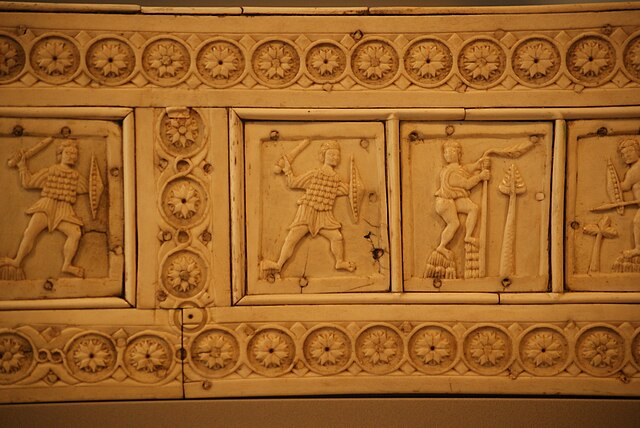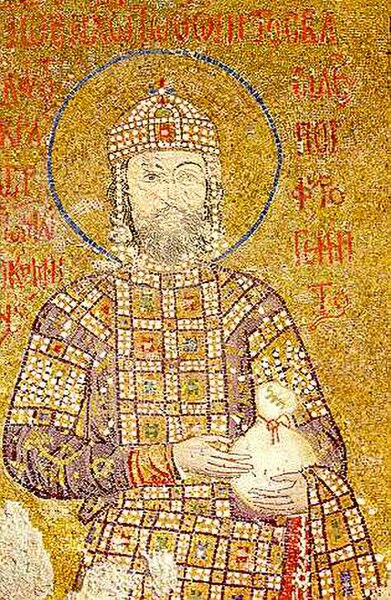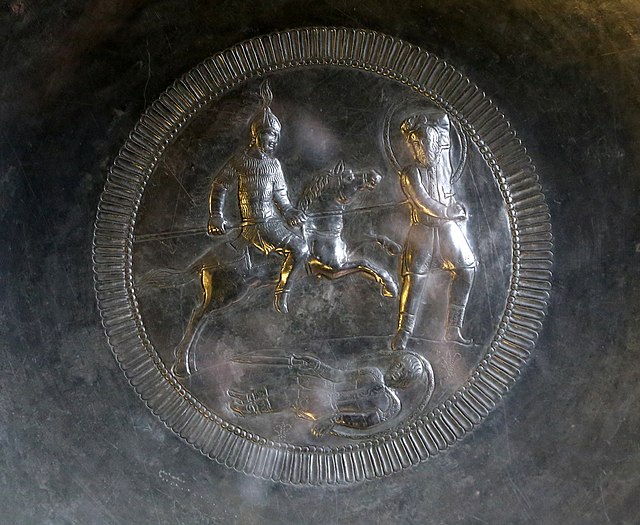The Byzantine army was the primary military body of the Byzantine armed forces, serving alongside the Byzantine navy. A direct continuation of the Eastern Roman army, shaping and developing itself on the legacy of the late Hellenistic armies, it maintained a similar level of discipline, strategic prowess and organization. It was among the most effective armies of western Eurasia for much of the Middle Ages. Over time the cavalry arm became more prominent in the Byzantine army as the legion system disappeared in the early 7th century. Later reforms reflected some Germanic and Asian influences—rival forces frequently became sources of mercenary units, such as the Huns, Cumans, Alans and Turks, meeting the Empire's demand for light cavalry mercenaries. Since much of the Byzantine military focused on the strategy and skill of generals utilizing militia troops, heavy infantry were recruited from Frankish and later Varangian mercenaries.
Emperor Constantine I
A 10th–12th century ivory relief of a Byzantine swordsman wearing scale armor and round shield– Berlin Bode museum.
Emperor John II Komnenos became renowned for his superb generalship and conducted many successful sieges. Under his leadership, the Byzantine army reconquered substantial territories from the Turks.
A heavy cavalryman (possibly a cataphract) lancing a Goth or Lombard, from the Isola Rizza dish
The Eastern Roman army refers to the army of the eastern section of the Roman Empire, from the empire's definitive split in 395 AD to the army's reorganization by themes after the permanent loss of Syria, Palestine and Egypt to the Arabs in the 7th century during the Byzantine-Arab Wars. The East Roman army was the continuation of the Late Roman army of the 4th century, until it gradually transformed into what is now called the Byzantine army from the 7th century onwards.
Shield insignia of regiments under the command of the Magister Militum Praesentalis II of the East Roman army c. 395 AD. Page from the Notitia Dignitatum





